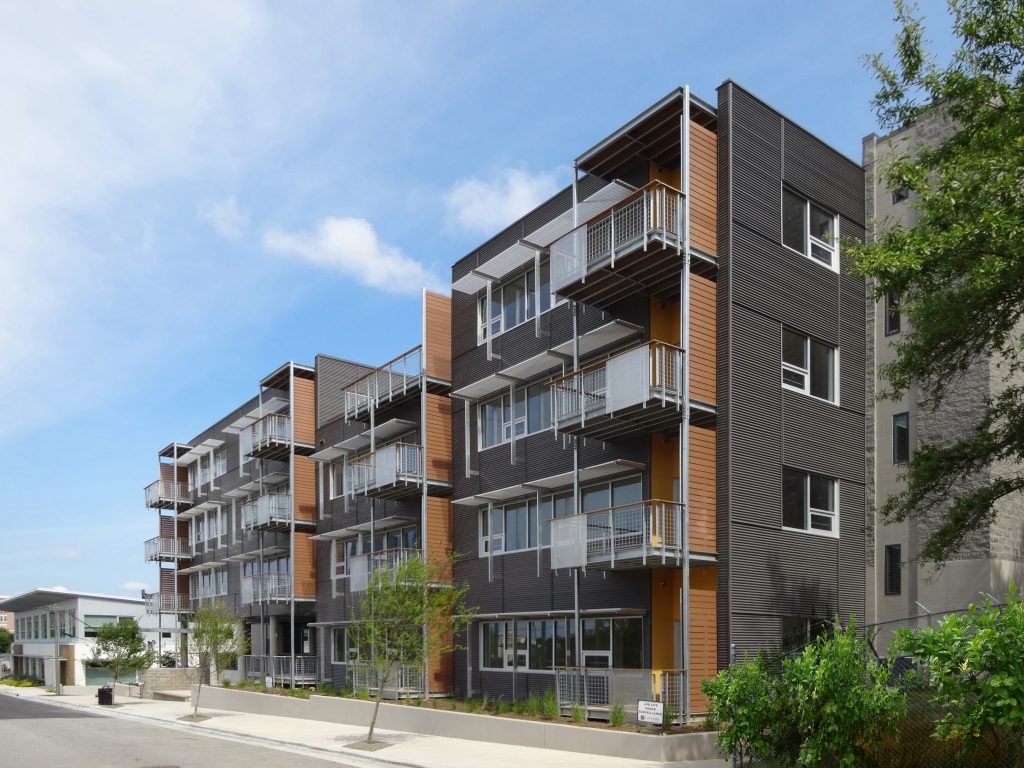Urban Cohousing – Best Positioned to Meet our Aspirations?

Last month, my Durham Coho hosted a visit by graduate students enrolled in an Urban Cohousing Design Studio at NC State College of Design. Tom Barrie, a Professor of Architecture and Director of the Affordable Housing and Sustainable Communities Initiative, was inspired by the National Cohousing Conference, and offered to provide this design studio, and present results at the Conference.
I was quite taken with the youthful enthusiasm exhibited by the students, including their innocent questions about how we “got along” in the community, and how did we organize workshare, and how cool that we have only one utility meter. Also enlightening were the questions we did not get – surrounding privacy issues and sharing of resources – that are typical among older adults considering cohousing. [What happens to us as we “mature” and end up isolating ourselves in our single family suburban homes? and heralding ownership of all our resources…but I digress]
Fast forward to this month, when I was asked to be a guest critic of the first review of student designs of multifamily urban cohousing, on downtown Durham sites. With limited spatial abilities, I leaned heavily on the architect pros who joined me. However, Tom wasn’t just interested in how the design worked for living, and for facilitated interaction – the baseline for cohousing architecture; Tom was postulating that design influences culture, and how do these designs support cohousing aspirations of ecological, economic and cultural sustainability?
The students took their projects seriously, creating individual and family demographic and value profiles from which to build. The approaches were innovative and impressive. One sought to create an arts-based community, including street front retail for selling their crafts. Many included urban farms, presenting – surprisingly to me – doable when compactly designed, with an eye to both sustainability and wider community engagement. One of the more creative projects was a community tied to close by “Durham School of the Arts,” to both house families of students in residence, and to provide community-based music studio space. Many involved retail collaboration, suggesting the increased vitality and sustainability this would provide.
I’m still close to the near-exhaustive process of constructing my own community; but the freshness and enthusiasm of these young designers was contagious and inspiring.
Come to Tom’s session at the National Cohousing Conference and see for yourself, including an intelligent consideration of the important factors of which cohousing aspires, and of which we are often challenged. When cohousing is well organized, design and managed, communities provide, in Tom’s assessment, “affordable and adaptable housing, supportive and intentional communities, and sustainable development…compact living unit paired with generous, commonly owned spaces promise affordable unit prices that offer generous living settings…By mission and design cohousing communities promise the support and activities of community often lacking in conventional housing .”
As appealing as cohousing presents, there relatively few cohousing communities in the US. Tom points out that most existing communities are located in suburban areas and he further suggests that some do not always or sufficiently provide the affordability, diversity, community and sustainability they promise. In Tom’s course syllabus, he outlines “this studio will equally research, design and critique this unique form of housing with the goal of critically examining its predominant characteristics and promises, and insightfully and comprehensively designing new expressions and materializations. We will focus on urban cohousing as a type and location that may be best positioned to satisfy the aspirations of this alternative housing.”
Intrigued? Come hear and see more at the conference.
Urban Co-Housing | Affordable, Adaptable and Sustainablehttps://www.cohousing.org/2015/sessions
Category: Building Buildings
Tags:
Views: 1404

